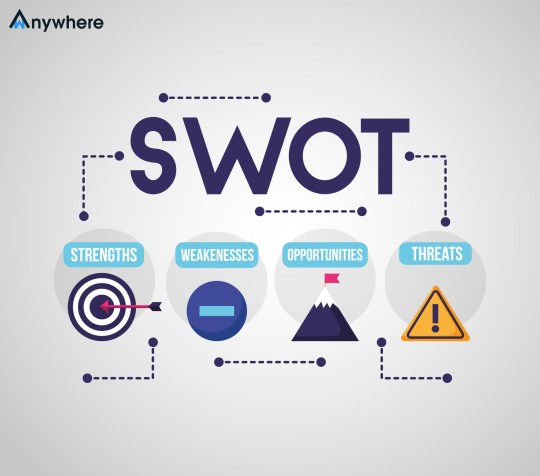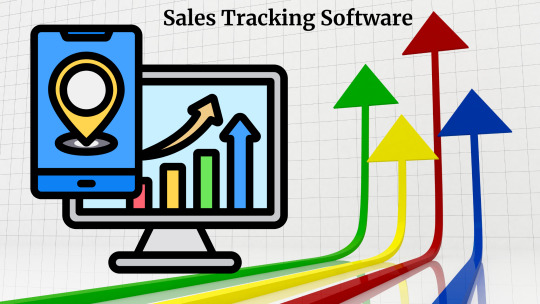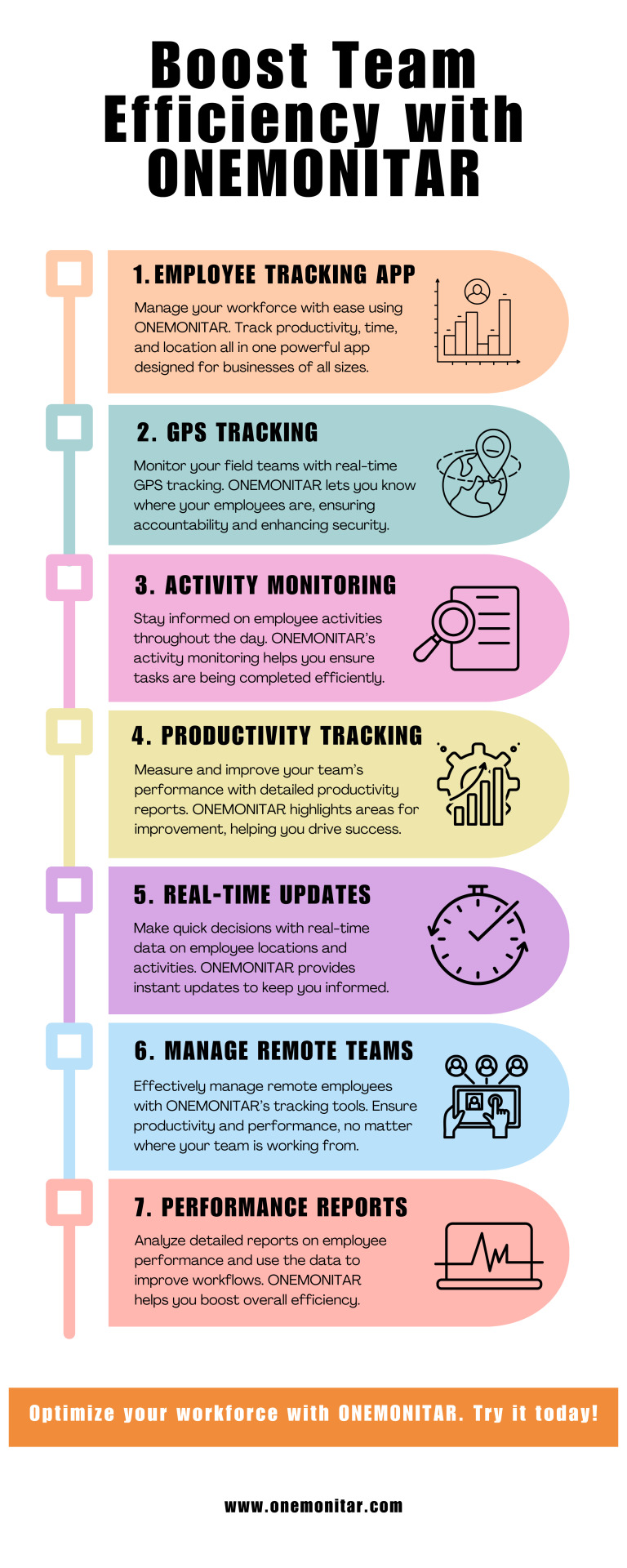#performance monitoring software
Explore tagged Tumblr posts
Text
SWOT analysis for employees – Assess and boost workforce performance
In modern businesses with evolved workplaces, the need for performance evaluation and workforce encouragement is a continuous process. Business leaders are constantly looking for helpful approaches to promote a vibrant company culture, enhance employee engagement, and improve overall productivity at work. With critical business elements to be aligned, the worth of workforce management software…

View On WordPress
#boost workforce performance#Employee Engagement#enhance workforce efficiency#performance monitoring software#productivity management software#real-time monitoring tools#SWOT analysis for employees#Workforce Management Software
0 notes
Text
The Power of a Holistic Employee Wellbeing Strategy

In today's competitive business landscape, companies are increasingly recognizing the pivotal role that employee wellbeing plays in achieving organizational success. Beyond mere perks and benefits, a holistic employee wellbeing strategy encompasses a multifaceted approach aimed at nurturing the physical, mental, and emotional health of employees. By prioritizing the wellbeing of their workforce, organizations can drive higher levels of employee engagement, enhance performance, and foster a thriving workplace culture.
Understanding Employee Wellbeing Strategies
Employee wellbeing strategies encompass a range of initiatives designed to support employees in various aspects of their lives. These strategies go beyond traditional healthcare benefits to address factors such as work-life balance, mental health support, professional development opportunities, and financial wellness programs. By taking a comprehensive approach, organizations can create an environment where employees feel valued, supported, and empowered to perform at their best.
The Link Between Employee Engagement and Wellbeing
Employee engagement and wellbeing are deeply interconnected. Engaged employees are those who feel a sense of connection to their work, their colleagues, and the organization as a whole. When employees are physically and mentally healthy, they are more likely to be engaged in their work, leading to higher levels of productivity, creativity, and innovation. Robust employee wellbeing strategies can therefore catalyze increased engagement, driving positive outcomes for both employees and the organization.
Enhancing Performance Through Wellbeing

Employee wellbeing directly impacts performance. When employees feel well-supported and cared for, they are better equipped to meet the demands of their roles effectively. Conversely, when wellbeing is neglected, productivity may suffer, leading to decreased performance and increased absenteeism with project management. By investing in employee wellbeing initiatives, organizations can create an environment where employees can thrive, resulting in improved performance across the board.
Implementing Employee Wellbeing Initiatives
Effective employee wellbeing initiatives require a strategic approach. Organizations can start by conducting assessments to identify areas of need and interest among their workforce. It might involve surveys, focus groups, or one-on-one discussions to gather feedback and insights. Armed with this information, organizations can then design and implement targeted initiatives that address the specific needs of their employees.
Monitoring Performance and Wellbeing
Performance monitoring software can be a valuable tool in assessing the effectiveness of employee wellbeing initiatives. By tracking key metrics such as productivity, engagement, and absenteeism, organizations can gain valuable insights into the impact of their wellbeing programs. This data can inform future decision-making and help organizations continuously refine and improve their strategies.
Creating a Culture of Wellbeing

Ultimately, the goal of employee productivity tracker wellbeing initiatives is to create a culture of wellbeing within the organization. It requires a collective effort from leadership, managers, and employees at all levels. Leaders must prioritize wellbeing and lead by example, while managers play a crucial role in supporting their teams and fostering a supportive work environment. Employees, too, have a role to play in prioritizing their wellbeing and supporting their colleagues in doing the same.
Sustaining Success Through Continuous Improvement
The journey towards holistic employee wellbeing is an ongoing process that requires continuous evaluation and improvement. Organizations must remain agile and responsive to the evolving needs of their workforce, adapting their wellbeing strategies accordingly. It might involve introducing new initiatives, refining existing programs, or leveraging technology to enhance accessibility and effectiveness. Regular feedback loops, employee surveys, and performance reviews can provide valuable insights into the effectiveness of wellbeing initiatives and identify areas for improvement.
Moreover, fostering a culture of open communication and transparency is crucial in promoting employee wellbeing. By encouraging dialogue and providing avenues for employees to voice their concerns and suggestions, organizations can demonstrate their commitment to supporting employee wellbeing and create a sense of ownership and empowerment among their workforce. By prioritizing employee wellbeing as a strategic imperative, organizations can cultivate a workplace where employees feel valued, engaged, and motivated to contribute to the organization's success.
Conclusion
Employee well-being must be prioritised in today's hectic and demanding work environment if an organisation is to succeed. A holistic employee wellbeing strategy can drive higher levels of engagement, enhance performance, and create a culture where employees feel valued and supported. By investing in employee wellbeing initiatives and leveraging performance monitoring software, organizations can create a workplace where employees can thrive, leading to positive outcomes for both individuals and the organization as a whole.
#employee engagement and wellbeing#employee wellbeing strategy#employee wellbeing initiatives#employee performance monitoring#performance monitoring software
0 notes
Text
The Power of a Holistic Employee Wellbeing Strategy

In today's competitive business landscape, companies are increasingly recognizing the pivotal role that employee wellbeing plays in achieving organizational success. Beyond mere perks and benefits, a holistic employee wellbeing strategy encompasses a multifaceted approach aimed at nurturing the physical, mental, and emotional health of employees. By prioritizing the wellbeing of their workforce, organizations can drive higher levels of employee engagement, enhance performance, and foster a thriving workplace culture.
Understanding Employee Wellbeing Strategies
Employee wellbeing strategies encompass a range of initiatives designed to support employees in various aspects of their lives. These strategies go beyond traditional healthcare benefits to address factors such as work-life balance, mental health support, professional development opportunities, and financial wellness programs. By taking a comprehensive approach, organizations can create an environment where employees feel valued, supported, and empowered to perform at their best.
The Link Between Employee Engagement and Wellbeing
Employee engagement and wellbeing are deeply interconnected. Engaged employees are those who feel a sense of connection to their work, their colleagues, and the organization as a whole. When employees are physically and mentally healthy, they are more likely to be engaged in their work, leading to higher levels of productivity, creativity, and innovation. Robust employee wellbeing strategies can therefore catalyze increased engagement, driving positive outcomes for both employees and the organization.
Enhancing Performance Through Wellbeing

Employee wellbeing directly impacts performance. When employees feel well-supported and cared for, they are better equipped to meet the demands of their roles effectively. Conversely, when wellbeing is neglected, productivity may suffer, leading to decreased performance and increased absenteeism with project management. By investing in employee wellbeing initiatives, organizations can create an environment where employees can thrive, resulting in improved performance across the board.
Implementing Employee Wellbeing Initiatives
Effective employee wellbeing initiatives require a strategic approach. Organizations can start by conducting assessments to identify areas of need and interest among their workforce. It might involve surveys, focus groups, or one-on-one discussions to gather feedback and insights. Armed with this information, organizations can then design and implement targeted initiatives that address the specific needs of their employees.
Monitoring Performance and Wellbeing
Performance monitoring software can be a valuable tool in assessing the effectiveness of employee wellbeing initiatives. By tracking key metrics such as productivity, engagement, and absenteeism, organizations can gain valuable insights into the impact of their wellbeing programs. This data can inform future decision-making and help organizations continuously refine and improve their strategies.
Creating a Culture of Wellbeing

Ultimately, the goal of employee productivity tracker wellbeing initiatives is to create a culture of wellbeing within the organization. It requires a collective effort from leadership, managers, and employees at all levels. Leaders must prioritize wellbeing and lead by example, while managers play a crucial role in supporting their teams and fostering a supportive work environment. Employees, too, have a role to play in prioritizing their wellbeing and supporting their colleagues in doing the same.
Sustaining Success Through Continuous Improvement
The journey towards holistic employee wellbeing is an ongoing process that requires continuous evaluation and improvement. Organizations must remain agile and responsive to the evolving needs of their workforce, adapting their wellbeing strategies accordingly. It might involve introducing new initiatives, refining existing programs, or leveraging technology to enhance accessibility and effectiveness. Regular feedback loops, employee surveys, and performance reviews can provide valuable insights into the effectiveness of wellbeing initiatives and identify areas for improvement.
Moreover, fostering a culture of open communication and transparency is crucial in promoting employee wellbeing. By encouraging dialogue and providing avenues for employees to voice their concerns and suggestions, organizations can demonstrate their commitment to supporting employee wellbeing and create a sense of ownership and empowerment among their workforce. By prioritizing employee wellbeing as a strategic imperative, organizations can cultivate a workplace where employees feel valued, engaged, and motivated to contribute to the organization's success.
Conclusion
Employee well-being must be prioritised in today's hectic and demanding work environment if an organisation is to succeed. A holistic employee wellbeing strategy can drive higher levels of engagement, enhance performance, and create a culture where employees feel valued and supported. By investing in employee wellbeing initiatives and leveraging performance monitoring software, organizations can create a workplace where employees can thrive, leading to positive outcomes for both individuals and the organization as a whole.
#employee engagement and wellbeing#employee wellbeing strategy#employee wellbeing initiatives#employee performance monitoring#performance monitoring software
0 notes
Text
youtube
In this video, we explore the emerging trends, technologies, and innovations shaping the future of employee monitoring software, with insights from industry experts and a closer look at how wAnywhere is leading the way.
#future of employee monitoring software#wAnywhere#AI#Software#Monitoring Tool#Technology#AI Software#AI Tool#Employee Monitoring#Track Employee Performance#HR Software#Tech Software#Youtube
1 note
·
View note
Text
How Sales Tracking Software Can Skyrocket Your Business Success

In today’s fast-paced business environment, managing sales and inventory effectively is both a challenge and an opportunity. To stay competitive, businesses must monitor sales, optimize stock levels, and streamline operations. A powerful sales tracking software and sales tracking system, such as Commence CRM, can transform these processes, delivering efficiency and growth. By integrating a robust sales tracking solution, businesses can overcome obstacles and unlock remarkable benefits.
Simplify Operations with a Sales Tracking System
Running a business requires juggling multiple responsibilities, from tracking inventory to monitoring sales. Manual methods are time-consuming, error-prone, and inefficient, often resulting in missed opportunities. A comprehensive sales tracking software automates these tasks, simplifying workflows and ensuring accuracy. Commence CRM’s sales tracking system empowers businesses to manage stock, track sales, and enhance productivity with ease.
Real-Time Inventory Management
Effective inventory control is essential for meeting customer needs. Commence’s sales tracking system provides real-time insights into stock levels, helping businesses avoid stockouts or excess inventory. By automating inventory tracking, setting alerts for low stock, and optimizing reordering, this system maintains ideal inventory levels and reduces costs. This ensures products are always available, boosting customer satisfaction and operational efficiency.
Effortless Order Fulfillment
Accurate and timely order fulfillment is critical for customer loyalty. Commence’s sales tracking system integrates seamlessly with order processing, minimizing manual data entry and errors. When a customer places an order, the system updates inventory, generates pick lists, and triggers shipping notifications. This streamlined process enhances order accuracy, speeds up fulfillment, and elevates the customer experience.
Actionable Sales Insights
Staying ahead requires a clear understanding of sales trends and customer demand. Commence’s sales tracking software delivers detailed insights into sales performance and inventory status. By analyzing seasonal trends and customer preferences, businesses can make informed decisions about inventory and marketing strategies. These insights drive increased sales, higher revenue, and a competitive advantage.
Boosted Business Efficiency
Manual sales tracking and inventory reconciliation are labor-intensive and error-prone. Commence’s sales tracking software eliminates duplicate data entry, manual reconciliations, and discrepancies, saving time and improving accuracy. By automating routine tasks, employees can focus on strategic priorities, streamlining operations and reducing administrative costs. This enhances overall productivity and optimizes resource allocation.
Seamless Integration with Business Systems
A standout feature of Commence’s sales tracking system is its ability to integrate effortlessly with other business applications. This ensures smooth data flow across platforms, eliminating manual transfers and reducing errors. By creating a unified ecosystem, businesses can support comprehensive processes, from sales to customer management, fostering collaboration and informed decision-making.
ConclusionIntegrating Commence’s sales tracking software and sales tracking system is a game-changer for businesses of all sizes. These tools streamline inventory management, enhance order fulfillment, and provide valuable insights to fuel growth. By leveraging the power of Commence CRM, businesses can optimize operations, boost efficiency, and achieve unparalleled success. Contact Commence CRM today to explore how a sales tracking system can propel your business to new heights.
#sales tracking software#sales tracking system#sales management tools#CRM sales software#sales pipeline tracking#sales performance monitoring#sales automation software#customer relationship management#lead tracking software#sales analytics tools
0 notes
Text
AI-Powered Financial Performance Monitoring & Virtual CFO Services
Discover AI-powered financial performance monitoring software with real-time expense tracking, advanced financial tools, and virtual CFO services in India. Streamline your finances with our AI-based solutions platform tailored for smarter business decisions.
#Financial performence monitoring software#ai powerd financial powerd tools#real-time expenses tracking software#AI-based financial solutions platform#Virtual CFO services India
0 notes
Text

Creating a Culture of Compliance with Checklists
"Compliance is not a task; it’s a mindset." – Business Adage
Building a culture of compliance isn’t about policing employees—it’s about integrating accountability into daily operations. Companies that rely on manual tracking and sporadic audits often find themselves struggling with inconsistent adherence to procedures, regulatory risks, and operational inefficiencies. The solution? Checklists.
Why Organizations Struggle with Compliance
1. Compliance Feels Like an Extra Burden
When employees perceive compliance as a tedious, bureaucratic requirement, they often cut corners or overlook critical steps.
Case Study: The Logistics Firm That Reduced Errors A leading Asian logistics company suffered frequent shipment errors due to skipped documentation steps. After introducing automated checklists, accuracy improved by 42%, and shipment delays dropped significantly.
2. Lack of Clear Accountability
Without structured tracking, it’s easy for employees to assume someone else is responsible for compliance tasks.
Example: The Hospital That Improved Patient Safety A major Singaporean hospital faced patient safety risks due to incomplete hygiene protocols. Implementing a real-time digital checklist system increased adherence to safety procedures by 95%, significantly lowering infection rates.
3. Inconsistent Monitoring & Reinforcement
If compliance is only reviewed during audits or when problems arise, it creates a reactive culture rather than a proactive one.
Anecdote: The Factory That Avoided Costly Shutdowns A Malaysian manufacturing plant faced frequent production halts due to missed machine maintenance. A structured checklist system flagged overdue tasks, reducing downtime by 30% and improving efficiency.
How Checklists Drive a Compliance-First Culture
1. Standardize Expectations
Checklists ensure that every employee follows the same process, every time.
They eliminate ambiguity and improve consistency.
2. Make Compliance Part of Daily Work
Integrate checklists directly into workflows rather than treating them as separate admin tasks.
Mobile and automated checklists reduce friction and increase adoption.
3. Provide Real-Time Visibility & Accountability
Digital checklists allow managers to track compliance progress in real-time.
Automatic notifications ensure no critical steps are skipped.
4. Reinforce with Recognition & Training
Highlight teams that demonstrate compliance excellence.
Use checklist data to identify areas for improvement and provide targeted coaching.
Conclusion: Compliance is a Habit, Not an Obligation
"A culture of compliance starts when employees see it as part of their success, not just a rule to follow."
By integrating checklists into daily operations, organizations can create a compliance-driven culture that is efficient, transparent, and proactive. Rather than waiting for audits or crises, companies that use structured checklists embed accountability into their DNA, ensuring long-term success. Is your organization ready to embrace compliance as a competitive advantage? To know more about Checklist and its Benefits, Visit : Starr.tectalik.com
#performancemanagement#employees#customer#working#business#services#branding#domainforsale#management#companies#hiring#performance#employee monitoring software#business management
0 notes
Text
#Network Performance Monitoring Market#Network Monitoring Solutions#Market Research Report#IT Infrastructure Monitoring#Network Performance Management#Cloud Network Monitoring#Network Optimization Tools#Market Size and Forecast#Network Security and Performance#Real-Time Network Monitoring#Competitive Landscape#Network Analytics and Insights#Emerging Trends in Network Monitoring#Software-Defined Networking (SDN) Monitoring#Network Troubleshooting Tools#Global Network Monitoring Market#AI in Network Performance Monitoring#Network Performance for Enterprises#5G Network Monitoring#Network Health and Diagnostics
0 notes
Text
Download HVAC-Cx: The Essential Building HVAC Systems Commissioning Tool
As building systems become increasingly complex, the need for efficient commissioning and monitoring tools has never been more critical. HVAC-Cx, developed by the National Institute of Standards and Technology (NIST), stands out as a powerful semi-automated commissioning software tool that’s transforming how we analyze and optimize HVAC performance in commercial buildings. Having worked…
#air handling units#APAR rules#BACnet#building automation#building energy management#custom rules#damper control#data analysis#diagnostic assistance#Energy efficiency#equipment monitoring#fault detection#functional performance testing#HVAC commissioning#HVAC-Cx v2.2#NIST software#operational modes#preventive maintenance#temperature sensors
0 notes
Text
Benefits of Implementing ERP Software for Engineering Firms

The engineering industry is one of the biggest industries in the world, and it plays an important role in growing the economy as well. The engineering sector is growing day by day and is highly competitive. Hence, efficiency, accuracy, and streamlined operations are crucial for success in this sector. Businesses face several challenges in this sector, like the complexities of a project, resource management, and deadline restrictions. ERP software for engineering firms is the best way to overcome all of these challenges as it integrates and automates business processes.
Here is the list of top benefits of utilizing ERP systems for the engineering industry:
1. Project Management:
The projects in engineering sectors have a detailed documentation process, different teams, and complicated workflows. ERP system for engineering firms help in various ways, like centralizing project data, enabling limitless collaboration, and getting real-time updates. Because of this software, every team member has all the updates, which in turn reduces miscommunication and delays in the project.
2. Resource Management:
For all engineering projects, it is essential to allocate all resources carefully, like equipment, materials, and labor. With the utilization of ERP software, the monitoring of resources can be performed easily. It helps in checking resource availability, optimizing usage, and forecasting requirements. This ultimately results in improving cost efficiency.
3. Quality Management:
Ensures engineering projects meet industry standards and regulations.
Quality Control: Offers tools for monitoring and managing the quality of materials, processes, and completed projects.
4. Data Management:
Using ERP software, engineering firms can make sure that they can get a unified database to eliminate data silos and ensure consistency through all departments. A centralized data management system is beneficial for decision-making as well it provides critical information when required.
5. Time and Budget Management:
When the whole system gets automated with ERP software, it reduces time and cost on repetitive tasks like data entry, procurement, and inventory management. The utilization of ERP systems in engineering firms helps in reducing manual errors and improving productivity. Hence, the firms can focus on other important things like innovation and project execution.
6. Client Relationship Management:
Most ERP systems include customer relationship management tools that are very helpful in managing client interactions. This tool allows the firm to track communication history, project milestones, and client preferences. Because of this feature, firms can improve customer satisfaction and build long-term relationships.
7. Scalability and Flexibility
ERP solutions may scale with the company as it grows, allowing for more projects, clients, and resources. Customization: ERP solutions can typically be tailored to an engineering firm’s specific demands and operations.
8. Financial Management
Accounting combines financial accounting with project management to provide a complete picture of the company’s financial health. Reporting: Creates detailed financial reports, such as profit and loss statements, balance sheets, and cash flow statements.
How PMTRACK ERP Helps:
Managing development processes, monitoring complex projects, and ensuring seamless collaboration across divisions are becoming increasingly important for company success. Engineering organizations in Pune, India, and around the world have distinct issues in successfully managing their operations.
Implementing a bespoke Enterprise Resource Planning (ERP) solution provides transformative benefits by streamlining processes, improving project management, and ultimately generating profitability.
For businesses considering ERP adoption, selecting the correct ERP software vendor is critical. PMTRACK ERP, a reputable ERP solution provider in Pune, India, specializes in engineering ERP systems tailored to the demands of engineering and manufacturing companies.
ERP software is used to connect project management with financial accounting, inventory control, and procurement procedures. This integration gives project managers real-time information about project costs, resource availability, and schedules, resulting in better-informed decisions and more effective project execution.
Engineering firms that use an ERP system can improve operational efficiency, reduce costs, improve project delivery, and ultimately boost client satisfaction and profitability.
Summary:
ERP software provides several advantages to engineering firms in Pune, India, ranging from better project management and financial control to higher client satisfaction and scalability. Engineering organizations can employ a comprehensive ERP solution to improve operations, decrease inefficiencies, and drive long-term growth.
PMTRACK ERP, one of the leading ERP solution providers in Pune, India, provides comprehensive, industry-specific ERP solutions that are suitable for engineering organizations’ unique requirements. Firms that collaborate with an experienced engineering ERP software company in India receive a trusted partner in negotiating the complexity of their business, setting them up for success in an increasingly competitive landscape.
#efficiency#accuracy#and streamlined operations are crucial for success in this sector. Businesses face several challenges in this sector#like the complexities of a project#resource management#Here is the list of top benefits of utilizing ERP systems for the engineering industry:#1. Project Management:#The projects in engineering sectors have a detailed documentation process#different teams#and complicated workflows. ERP system for engineering firms help in various ways#like centralizing project data#enabling limitless collaboration#and getting real-time updates. Because of this software#every team member has all the updates#which in turn reduces miscommunication and delays in the project.#2. Resource Management:#For all engineering projects#it is essential to allocate all resources carefully#like equipment#materials#and labor. With the utilization of ERP software#the monitoring of resources can be performed easily. It helps in checking resource availability#optimizing usage#and forecasting requirements. This ultimately results in improving cost efficiency.#3. Quality Management:#Ensures engineering projects meet industry standards and regulations.#processes#and completed projects.#4. Data Management:#Using ERP software
0 notes
Text
Understanding CAD Computer Requirements: Essential Guide for Optimal Performance
If you’re diving into the world of Computer-Aided Design (CAD), ensuring that your system is properly equipped to handle the demands of software like AutoCAD is crucial. Whether you are an architect, engineer, or designer, having the right hardware and software configuration will not only improve your workflow but also guarantee smoother performance and better results. In this blog, we’ll walk through the key computer requirements for running AutoCAD and other CAD software smoothly.

Why Understanding CAD Computer Requirements Matters
Running CAD software efficiently requires more than just having a standard computer. CAD applications, especially AutoCAD, are resource-intensive and demand high computing power. Without a suitable setup, you might experience lagging, crashes, or long rendering times that could affect productivity. Understanding these requirements ensures that your system is up to the task and can handle the software’s robust functionalities without compromising performance.
Key CAD Computer Requirements for Optimal Performance
1. Processor (CPU): The Brain of Your CAD System
The processor is the heart of your CAD system. CAD software requires a multi-core processor to handle complex calculations and data. AutoCAD, for example, performs better on processors that can handle multiple tasks at once.
Recommended: A multi-core processor, ideally with 4 or more cores, such as Intel i7/i9 or AMD Ryzen 7/9.
Minimum: Intel Core i5 or AMD Ryzen 5 (6th generation or newer).
Choosing a higher-end processor will significantly enhance your CAD experience, especially when working with complex designs or large files.
2. Graphics Card (GPU): Visuals and Rendering Performance
The graphics card is crucial for rendering 3D models and visualizing designs in AutoCAD. A powerful GPU will ensure smooth navigation, rendering, and model manipulation in both 2D and 3D spaces.
Recommended: NVIDIA GeForce RTX Quadro series or AMD Radeon Pro series.
Minimum: NVIDIA GeForce GTX or AMD Radeon RX series.
For demanding 3D modeling tasks, consider upgrading to a workstation-grade GPU like the NVIDIA Quadro series, which is optimized for professional CAD workflows.
3. Memory (RAM): Smooth Multitasking
When working with large files or running multiple applications, ample RAM is necessary to avoid system slowdowns or crashes. CAD software requires significant memory to store large drawings, 3D models, and complex calculations.
Recommended: 16GB or more of RAM.
Minimum: 8GB of RAM.
For more intensive CAD tasks or multitasking (like running AutoCAD with other software), investing in 32GB or more of RAM is ideal.
4. Storage: Quick Access to Large Files
CAD designs often involve large files that need fast access and ample storage space. A slow hard drive can create bottlenecks when loading files or saving work, hindering your productivity. Opting for an SSD (Solid-State Drive) will significantly improve file loading times and overall system responsiveness.
Recommended: 512GB or higher SSD for storage.
Minimum: 256GB SSD or a 1TB HDD (though SSD is always recommended).
For the best performance, SSDs should be used for the operating system and primary software installation, while larger HDDs can be used for archival purposes.
5. Display: Crisp and Accurate Visualization
A high-resolution display is essential for accurately visualizing detailed designs and models. AutoCAD users often work with intricate 2D and 3D elements, making a large, high-resolution monitor an essential component of the setup.
Recommended: A 24” or larger screen with 1920x1080 resolution (Full HD) or higher, ideally with IPS technology for better color accuracy.
Minimum: 21” screen with 1920x1080 resolution.
For better productivity, you may even consider a dual monitor setup to increase workspace and improve multitasking efficiency.
6. Operating System: AutoCAD Compatibility
The operating system you use can impact the compatibility and performance of your CAD software. AutoCAD supports both Windows and macOS, but Windows remains the dominant platform for CAD applications due to better driver support and compatibility.
Recommended: Windows 10 64-bit (or newer), or macOS Mojave 10.14 or later.
Minimum: Windows 8.1 (64-bit) or macOS High Sierra 10.13 or later.
For those using Windows, make sure to keep your OS updated to take advantage of the latest performance and security enhancements.
7. Internet Connection: Cloud Integration and Updates
While not a direct hardware requirement, a reliable internet connection is important for downloading software updates, using cloud-based storage, and collaborating on projects. AutoCAD’s cloud integration features, such as AutoCAD Web and AutoCAD Mobile, rely on internet connectivity for seamless operation.
Recommended: Stable broadband connection with speeds of at least 10 Mbps.
Minimum: Basic internet connection for updates and cloud features.
Additional Tips for Optimizing Your CAD System
Ensure Regular Software Updates: Keeping your AutoCAD software and drivers up to date ensures compatibility and optimizes performance.
Consider External Storage for Backup: Large CAD files can quickly fill up your system’s storage, so having an external drive or cloud storage option for backup and archiving is a good idea.
Use CAD-Specific Peripherals: A high-quality mouse and keyboard designed for CAD work can enhance precision and reduce strain during long working hours.
Conclusion
Setting up a system to run AutoCAD and other CAD software efficiently isn’t just about meeting the bare minimum requirements — it’s about ensuring that your system can handle complex design tasks without compromising on speed or performance. By investing in a high-performance processor, powerful graphics card, sufficient RAM, and an SSD for fast storage, you’ll experience smoother, more efficient CAD workflows.
To learn more about AutoCAD system requirements, be sure to check out Virto Solar’s AutoCAD System Requirements page. This guide will help you make the right decisions for your setup, ensuring that your CAD design work is always at its best.
Are you ready to upgrade your system for seamless CAD experiences? Make sure your system is optimized for success with the right components, and get started on your next project with confidence!
#AutoCAD System Requirements#Best Computer for AutoCAD#AutoCAD Hardware Requirements#Computer Requirements for CAD Software#Optimal PC for AutoCAD#CAD System Configuration#CAD Design Computer Specifications#Best Graphics Card for AutoCAD#Recommended Processor for AutoCAD#AutoCAD RAM Requirements#Storage Requirements for AutoCAD#AutoCAD Performance Optimization#How to Choose a Computer for AutoCAD#AutoCAD PC Setup Guide#Best Workstation for AutoCAD#AutoCAD Compatible Hardware#Laptop for AutoCAD#Solid-State Drive for AutoCAD#AutoCAD 3D Modeling Requirements#AutoCAD 2025 System Requirements#How Much RAM for AutoCAD#Best Monitor for CAD Design#AutoCAD Operating System Requirements#AutoCAD Graphic Cards Comparison
0 notes
Text
Revolutionising Road Construction with Technology: Enhancing Project Management for a Smarter Future
The road construction industry plays a vital role in shaping modern infrastructure, driving economic growth, and ensuring efficient transportation networks. However, it faces persistent challenges, including project delays, safety risks, cost overruns, and inefficient resource management. As construction projects grow in complexity, the need for innovative solutions to boost productivity and efficiency has never been more critical.
Learn more https://www.cyberswift.com/blog/revolutionising-road-construction-with-technology-enhancing-project-management-for-a-smarter-future/

#road construction monitoring software#road project tracking system#csrmonitoringsoftware#road construction progress tracking#gis based road monitoring system#road construction management software#real time road project monitoring#road construction tracking application#construction project tracking system#road project progress monitoring#road asset management software#road construction analytics tools#road infrastructure monitoring system#construction monitoring software for roads#road project planning software#digital road project monitoring system#smart road monitoring solutions#road construction quality monitoring#road project performance tracking#road mapping and monitoring software
0 notes
Text
Boost Team Efficiency with ONEMONITAR

Looking for an efficient way to manage your team and boost productivity? Check out ONEMONITAR's employee tracking app infographic! Discover how you can easily track employee activities, monitor GPS locations, and get real-time updates—all from one app. Whether you're managing a remote team or need detailed performance reports, ONEMONITAR helps you stay on top of your workforce and improve results.
Boost your business performance today with ONEMONITAR!
#Best employee tracking app#Employee monitoring software#GPS employee tracking app#Employee activity monitoring app#Employee productivity tracking app#Employee tracking app for Android#Remote employee tracking app#Real-time employee tracking app#Employee location tracking app#Employee tracking software for small business#Employee performance tracking app#Mobile employee tracking app
0 notes
Text
Jayson Murphy IT service

Website: http://jaysonmurphyitservicer.com/
Address: 609 New York Ave, Brooklyn, NY 11203, USA
Phone: 917-577-3337
Jayson Murphy IT Service is a comprehensive provider of managed IT solutions tailored to meet the unique needs of businesses. With a focus on enhancing operational efficiency and ensuring robust cybersecurity, we offer a range of services including network management, cloud solutions, data backup, and IT consulting. Our team of experienced professionals is dedicated to delivering reliable support and innovative technology strategies that empower organizations to thrive in a digital landscape. At Jayson Murphy IT Service, we prioritize customer satisfaction and work closely with our clients to develop customized solutions that drive growth and success.
Business Email: [email protected]
Facebook: https://facebook.com/abdulmanufacturerlimited
Twitter: https://twitter.com/abdulmanufacturerlimited
Instagram: https://instagram.com/abdulmanufacturerlimited
TikTok: https://tiktok.com/@abdulmanufacturerl
#IT services#Managed IT services#IT support#IT consulting#Technology solutions#IT staff training#Cybersecurity training#Software training workshops#Technology bootcamps#IT certification programs#Custom software development#E-commerce solutions#CRM implementation#Workflow automation solutions#Digital transformation services#IT performance monitoring#Network monitoring tools#Application performance analysis#IT health checks#Data analytics services#Brooklyn NY IT services#IT support in Brooklyn NY#Managed IT services Brooklyn NY#Cybersecurity Brooklyn NY#IT consulting Brooklyn NY#Remote work solutions#Team collaboration tools#Video conferencing solutions#Unified communication systems#Project management software
1 note
·
View note
Text
Smart Financial Solutions: Planning, Monitoring & Risk Assessment for SMEs
Discover cutting-edge financial planning software for SMEs, advanced financial performance monitoring, risk assessment tools, and diagnostics platforms to streamline your business operations efficiently.
#financial planning software for SMEs#financial performance monitoring software#Financial diagnostics platform#financial risk assessment tools
0 notes